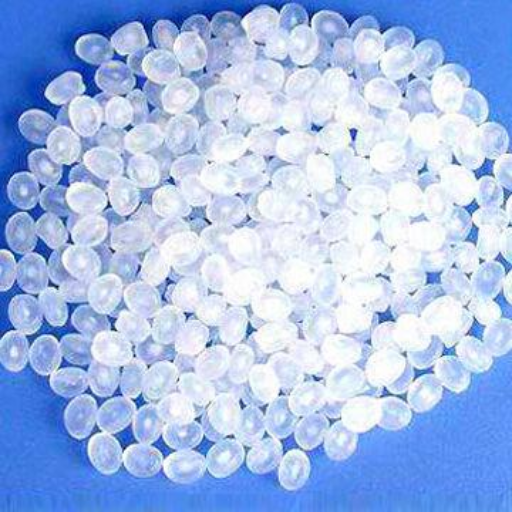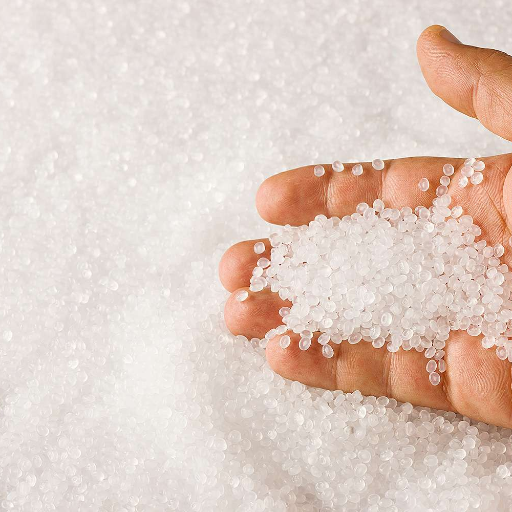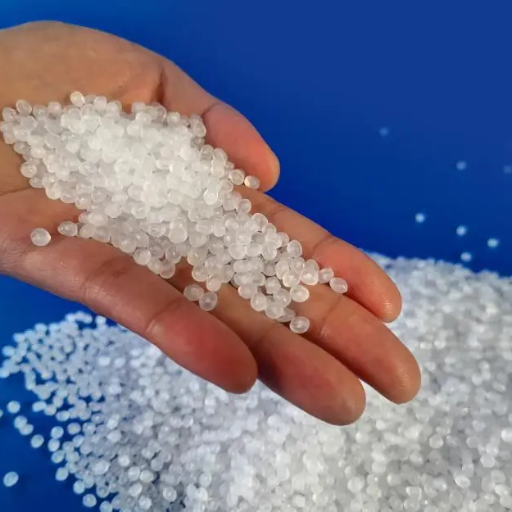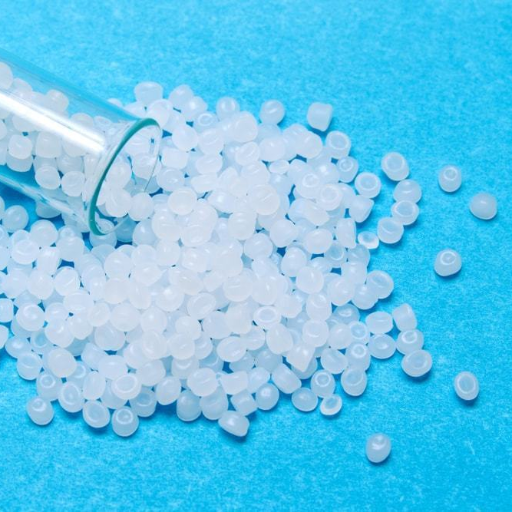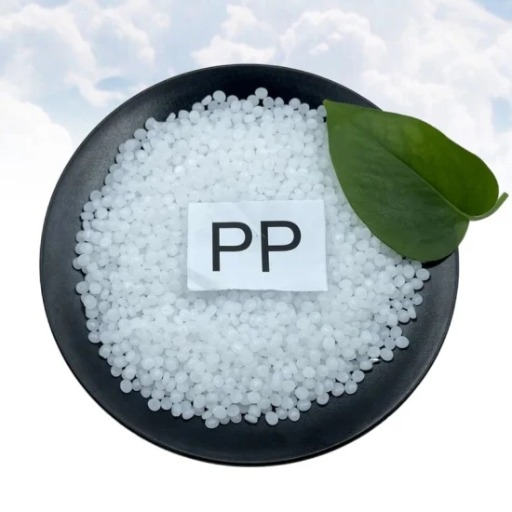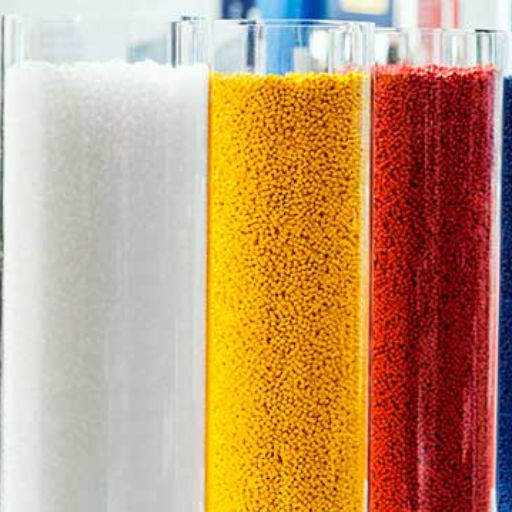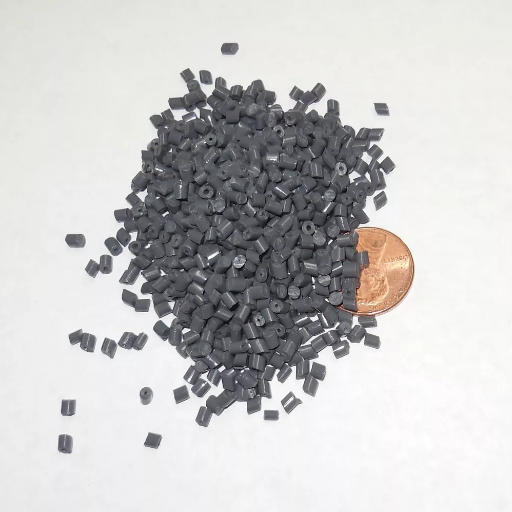Polypropylene resin, a manifoldly used plastic, is critical in many sectors such as automobile consumer goods, textiles and packaging. This material has become popular because of its wonderful characteristics like chemical resistance, high durability and cost effectiveness. The present article covers key characteristics of this substance, its diverse uses and trends that are affecting the industry today. The objective of giving an overview in this paper is to help readers understand the important role played by polypropylene resin in contemporary industrial setup.
What is Polypropylene (PP) Resin and Why is it So Popular?
The Fundamental Characteristics of Polypropylene Resin
As an expert in this field, I can assure you that polypropylene resin has several characteristics that make it very popular. First of all, it is highly chemically inert which makes it ideal for use in a range of applications from packaging to automotive parts. This is also a resin with a high melting point and so its durability is excellent as well as the ability to be used at high temperatures. Furthermore, polypropylene combines light weight with great strength, offering reasonable flexibility and toughness. It is cost-effective because manufacturing is easy and recycling works too, making it a material of choice in many industries. These properties not only define polypropylene resin as one among versatile plastics but also make it the basis of modern production.
Polypropylene Applications: Where Is Polypropylene Typically Used?
As an industry professional, I can confirm that polypropylene resin finds its application almost everywhere due to its versatility. In packaging industry food containers; beverage caps and plastic wraps are some examples where the material has been used heavily due to their good chemical resistance and durability. Its other areas include bumpers, interior trim, battery cases etc in the motor vehicle sector based on the material’s high melting point and lightness respectively. Because it’s sterile and does not react with chemicals, some uses for such products as syringes or pill bottles have been made out of it in medicine section. Likewise household goods manufacturers have found use in storage bins; reusable bottles; carpets etc., among others.Therefore, this recyclable material continues defining everyday life and modern manufacturing.
Polypropylene vs Other Plastic Resins
As an expert in this field, I can tell you that what distinguishes polypropylenes from other similar resins are its unique properties. Unlike PE (polyethylene), which is softer and more flexible than PP (polypropylene), PP offers higher rigidity along with a higher melting point, hence it is suitable for applications requiring higher strength and temperature resistance. Polypropylene on the other hand is less dense and chemically inert compared to PVC(polyvinyl chloride) hence not prone to physical reaction with substances it comes into contact with. As such, it can be used in packaging and medical areas. Polystyrene is another commonly used resin, however, being brittle and having lower heat resistance as compared to polypropylene diminishes its use in industries that require stronger materials. Simply put, polypropylene’s durability; chemical resistance; lightweight properties and recyclability among others make it unique thus making it suitable for many different applications in a large number of fields.
Understanding the Resin Price Dynamics
Factors That Influence Polypropylene Resin Prices
Polypropylene resin prices are influenced by a number of key factors. Firstly, the cost of raw materials which primarily include propylene monomers plays a large role. Therefore, changes in crude oil and natural gases directly impact on nature of propylene costs thus affecting polypropylene pricing rates. Secondly, supply and demand dynamics are key; during times when there is high demand or any supply chain disruptions, prices can skyrocket. Thirdly political issues like trade policies such as tariffs as well as import/export restrictions within different countries have also been noted to be another major reason for price fluctuations.
Additionally, production costs including energy and labor expenses influence the prices of resins. Ultimately technological improvements and innovations in how things are made can help lower the cost through improved efficiency or increase them by adopting new costly ways. Finally, understanding these dynamics will make better predictions and other strategic planning related to industry possible.
Beginner’s Guide to Reading the Resin Price Report
The first time you read a resin price report it may appear overwhelming but do not worry about that. I will take you through some basics since I am an industry expert myself. First thing to look into is executive summary that covers main findings discussed in this particular section.
Further subheading outlines diverse influences upon prices-purchase cheapness in terms of material inputs; rivaling causes (for instance: supply level versus demand situation); as well as international relations’ part played by nations’ tariff policy measures or counter-trade limitations among others. In line with this one should know just how much each factor contributes towards prices moving up-words or declining-wards (for instance, on a future date a sharp rise of oil quotations may differ appearance indicating an inclination towards subsequent changes in polypropylene values).
Moreover there are numerous charting and graphing tools…they might be important because they identify history trends…For example reading what market analysts say in other adjoined sections might also bring out to you helpful perspectives which will be beneficial for your strategic planning.
Additionally, it is advisable to acquaint oneself with the industry specific language or terms used within the report. This knowledge is necessary for an understanding of all the subtleties and shades of meaning that emerge through a given report’s market analysis.
In summary, by focusing on these key areas, what looks like a complex document initially can actually become an invaluable decision making tool.
Future Trends: What’s Next for PP Prices?
Being a specialist in this field, I can give some insights into what we can possibly see in relation to polypropylene (PP) prices in the near term. The market is presently negotiating a labyrinth of influences and several key indicators are expected to shape changes in price. Firstly, there will be improvements made in recycling technologies and these are bound to influence supply levels with the possibility of stabilizing prices as more recycled PPs get into the market. At the same time, demand for more sustainable materials due to regulatory pressures against plastic waste would indirectly impact on PP prices.
Moreover, geopolitical factors also have an important role. Trade policies between major producers and consumers of crude oil and petrochemicals will continue being crucial. Any ruptures in these relationships would cause significant price swings. Another critical determinant is continuing innovation of production techniques- Efficiency gains as well as new catalysts could reduce manufacturing costs that might eventually affect consumer prices.
Besides it is necessary to take broader economic environment into consideration. Economic growth periods are generally associated with increased manufacturing activity which raises demand for PP. Conversely, during economic downturns, there may be a decline in demand leading to potential price weakness. By looking at these wider macro-economic parameters of reference one can better anticipate future pricing trends.
Observing how these changing variables evolve gives us an upper hand when it comes to dealing with the path ahead of PP prices .
The Mechanical and Physical Properties of Polypropylene
Exploring Mechanical Properties: Strength and Ductility
As an expert in this field, I acknowledge that the mechanical properties of polypropylene (PP) are crucial for its efficient use in various fields. Polypropylene has a high strength-to-weight ratio and is thus versatile for use in light yet strong articles. Usually, the tensile strength of PP ranges between 20 and 40 MPa, depending on grade and formulation of the polymer. This level of strength enables PP to endure significant loads without deformation, which is important for components subjected to mechanical loading.
Ductility is another important property associated with PP material. It means that before rupturing plastic strain can occur in polypropylene as a material. In such applications where flexibility and impact resistance are needed this feature plays a very vital role. For example it should be noted that polypropylene has substantial elongation at break (often exceeding 300%), which allows it to absorb energy through yielding. This ductility is useful during manufacturing operations such as injection molding or extrusion where complex geometries can be achieved using PP without compromising its structural integrity.
As a result, it makes it suitable for many different industries including automobile industry (parts), consumer goods and so forth. By understanding these mechanical properties we can innovate to improve the performance as well as sustainability of our product development.
Physical Implications
Being an industry expert, I know how physical properties determine the applications of polypropylene (PP). The weight-strength ratio also known as balance helps reduce weight in automotive industry but still keep cars durable. Consequently, all these contribute towards reduced emissions aimed at attaining global environmental sustainability objectives like improved fuel economy.
Again, when it comes to household products like containers or electronic devices parts that have higher input stresses imposed upon them by design specifications—such as wall thickness—polyproline’s offers unmatched reliability.
Additionally, inventive designs are made possible by PP’s ductility. Packaging, for instance, requires PP to be moldable into intricate forms that do not compromise on strength; this is necessary in order to make functional as well as aesthetically appealing products. This flexibility also applies to medical devices where sterilization is needed.
Generally, the combination of strength, ductility and lightweight features makes PP a relevant material in diverse industries. The knowledge about these properties can therefore help in application development and drive an innovation in accordance with changing market needs.
Thermoplastic Nature: Heat and Chemical Resistance
As an industry expert, I can confidently say that the thermoplastic nature of polypropylene (PP) is one of its most outstanding features. PP is highly resistant to heat, which makes it ideal for applications with large temperature variations. For instance, in automotive parts, PP can withstand high temperatures in car engines without degrading over time thereby ensuring long-lasting performance and safety.
Furthermore, chemical resistance of PP broadens its application scope. This material does not react with acids, bases or alcohols thus conserving its quality and functioning in rough chemical atmospheres. This characteristic becomes invaluable particularly in medical and chemical industries where PP is frequently used in the production of laboratory equipment such as medical containers that are supposed to remain clean sterile and middlemen between potential chemical reactions.
Cool thermoplasticity and efficacy sum up why these traits not only expand PP applicability but also make durable and reliable products through this versatile substance.
PE Resin vs. PP Resin: Understanding the Differences
Polyethylene (PE) versus Polypropylene (PP): A Comparative Study
In this regard, as a professional in the industry, I would like to assist you by clearly outlining the difference between Polyethylene (PE) and Polypropylene (PP). Both are types of thermoplastics which are highly flexible and widely used but each has unique properties that make them suitable for different applications. For better understanding, let us dissect these differences along the relevant parameters.
Density and Strength
- Polyethylene (PE): The density of PE is generally lower than that of PP hence it is lighter. It also possesses good impact resistance and flexibility hence its common usage in things like plastic bags or bottles.
- Polypropylene (PP): On the other hand, PP has a higher density compared to PE resulting into greater strength and stiffness. Being strong enough for automotive parts, heavy duty containers etc makes it the best choice.
Melting Point
- Polyethylene (PE): It usually melts at lower temperatures about 120°C so it can hardly be applied in high-temperature environments. However, due to its low melting point range it is easier to process some simple consumer goods from this type of material.
- Polypropylene (PP): On the contrary, PP enjoys higher melting points ranging within 160-170 °C thus making it retain its shape and properties under conditions of high temperature exposure such as automotive industry or even microwave-safe materials.
Chemical Resistance
- Polyethylene (PE): It has exceptional resistance against various chemicals including acids and corrosives thus ideal for chemical storage containers as well as pipes made from polyethylene plastics.
- Polypropylene (PP): In addition, PP demonstrates excellent chemical resistance especially against bases as well as acids so that it is frequently chosen for laboratory equipment or medical containers being sterilized.
Flexibility and Toughness
- Polyethylene (PE): This polymer material possesses high ductility and flexibility thereby not breaking when bent or flexed making it preferable in areas like plastic films/bags e.g., grocery bag etc.
- Polypropylene (PP): Conversely, PP is not as flexible as PE but it is tougher and harder. It is used in structural applications where shape retention and toughness are very important.
Cost and Availability
- Polyethylene (PE): It is mostly cheaper than other plastics and more widely available which makes it the most suitable choice for packaging materials used in large volumes.
- Polypropylene (PP): Despite being slightly more expensive than PE, the improved properties justify its extra cost when required for specific applications with higher strength or thermal resistance.
The bottom line is that while both PP and PE cannot be done without in the plastic industry, the determination of one over another depends on application specific requirements. The best material to use should consider factors such as thermal resistance, chemical compatibility, mechanical strength and overall cost effectiveness.
Choosing Between PE and PP Resins for Your Application
As an industry authority, Polyethylene (PE) and Polypropylene (PP) resins are the ones that matter in your application. Here’s what you need to take into account:
- Thermal Resistance: If your application involves exposure to high temperatures or requires autoclaving, then choose PP. For low-temperature environments, PE is more appropriate.
- Chemical Compatibility: In case your application needs high resistance to chemicals especially bases and acids; go for PP instead. PE also has excellent resistance to chemicals but may not be as strong as PP.
- Mechanical Properties: PE is suitable for applications such as plastic films and bags that require flexibility and ductility because it is highly ductile. PP on the other hand if your application requires rigid stability and toughness.
- Cost and Volume: When it comes to budget constraints and large volume orders, the lower cost of PE coupled with its wide availability can be beneficial. Nonetheless, where better performance justifies a higher price tag, PP offers improved strength along with thermal resistance.
In conclusion, understanding the specific performance requirements of your application will help you decide between either PE or PP so that it would be effective in terms of both output efficiency and final product cost-effectiveness.
Innovations in Recycling Polypropylene
Recycling of Polypropylene Plastic
Polypropylene (PP) waste materials are gathered from several sources including post-consumer and post-industrial products in the process of recycling Polypropylene (PP) plastics. After collecting these, PP is sorted to separate it from other types of plastic and contaminants.
The next step is to thoroughly clean the sorted PP so as to remove any residual labels, adhesives or any form of impurities. This helps in ensuring that the recycled material is pure. The cleaned PP plastics are then shredded into smaller pieces or flakes, which maximize its surface areas for further processing.
Afterwards, the shredded PP is melted and extruded through some screens where any remaining contaminants are filtered out. The purified molten PP is then converted into pellets which act as raw material for making new products. These pellets can be used in a number of applications including packaging materials as well as automotive parts thereby illustrating that recycled PP is versatile and sustainable.
As an expert in this field, I believe each step of this process contributes to creating a better quality and performance than before when producing recycled polypropylene materials. Proper sorting, cleaning, and extrusion techniques ensures high-quality recycled polypropylene that meets industry standard while contributing to circular economy.
Challenges and Solutions in Polypropylene Recycling
Being an industry expert I know that there are various challenges involved in recycling polypropylene (PP) which must be addressed properly for effective processes that abide by sustainability principles.One such challenge includes contamination whereby pp waste normally has remnants of other plastics, labels or food which degrades quality of the recycled product hence requiring advanced sorting and cleaning technologies for purity enhancement on collected P.P .
The second great obstacle comes from degradation of PP properties following frequent recycling cycles thus leading to mechanical weakness and less durability over time.In order to address this problem we incorporate stabilizers and additives into our recycling procedure in order to preserve strength.Furthermore blending virgin PP with the recycled one can correct its original status, thus extending its useful life.
Recycled PP supply and demand discrepancy is also an issue. Discontinuous supply chains make it impossible to maintain an even flow of production. We collaborate with suppliers so that we can have a consistent collection network for our products while raising public awareness on recycling of PP products which will facilitate a transition to circular economy.
The last obstacle is economic viability. The sorting and cleaning necessary often makes the cost of recycled PP greater than that of virgin PP. Nevertheless, through investing in more efficient recycling technologies as well as process optimization, we are striving to reduce costs and improve the economic viability of using Recycled polypropylene in various industries by encouraging widespread adoption and thereby promoting its universal acceptability.
Virgin vs. Recycled Polypropylene: A Performance Analysis
On the other hand, recycled PP is an environmental superstar although it compromises its mechanical strength just a bit. Thus, recycled PP with incorporated stabilizers and additives during recycling process could be used to fulfill effectively the demands of less demanding applications. Additionally, blending virgin PP with recycled one is an effective solution for those cases where mechanical properties are of great importance.
Another issue which must be taken into account is economic aspect. The initial cost of the sorted and cleaned recycled PP may be higher but its long-term advantages in terms of reduced landfill waste and dependence on fossil resources cannot be ignored. This has helped us narrow down the performance gap between virgin and recycled PP through investing in new technological approaches hence making it possible to use recycled materials for wider range of applications.
The Role of Polypropylene in the World of Plastics Trading
Understanding PP Trading: Key Factors and Considerations
There are several key factors and considerations that an industry expert must understand about PP trading nuances:
- Market Demand and Supply: The availability and pricing of PP are dictated by the equilibrium between demand and supply. Factors affecting this balance include trends in industrial usage, manufacturing rates, and geopolitical developments that impact on global trade.
- Quality and Specifications: Both buyers and sellers have to make sure that their polypropylene is up to the necessary standards. This covers such parameters as melt flow rate (MFR), density, mechanical properties among others with uniformity in these specifications being crucial for consistency of product integrity across various applications.
- Pricing Volatility: Prices for PP fluctuate mainly due to raw material costs, mostly petroleum, and other economic issues. Therefore, traders should follow these price changes with strategies like futures contracts or hedging to reduce financial risks.
- Legislation and Environmental Regulations: One should strictly adhere to environmental regulations at regional and international levels. Among them are policies on recycling as well as sustainable practices which are becoming more stringent within plastics sector.
- Logistics and Supply Chain: For timely delivery and cost-effective distribution efficient logistics systems coupled with resilient supply chain management is indispensable. Such factors as transportation expenses, port effectiveness, warehousing capabilities significantly affect the success of PP trading.
- Technological Advancements: Ongoing innovations in polymer processing together with recycling technologies determine the dynamics of the PP market. Trader having knowledge about new technological developments can exploit emerging opportunities thereby maintaining competitiveness
Industry professionals who navigate these elements adeptly will enhance their trading strategies ensuring profitability while aligning themselves with market dynamics as well as environmental responsibilities.
Global Market Trends in the Trade of Polypropylene
Various trends are currently shaping the landscape of polypropylene (PP) trading as a professional in the industry. One major trend is the growing demand for PP in packaging, automotive and consumer goods segments because it is flexible and affordable. Also, manufacturers have embraced sustainability thereby developing bio-based and recycled PP materials to meet regulatory requirements and green product demands from consumers.
In terms of geography, Asia Pacific remains at the top with China and India leading both producers and consumers due to their expanding industrial base. In addition, North America as well as Europe is experiencing a boom regarding advanced manufacturing techniques that enhance the performance characteristics of PP applications.
Changes occurring in polymer processing technology and recycling systems keep redesigning this market by offering chances for better efficiency. Moreover, global events induced disruptions in supply chains have shown how significant resilient and adaptive logistics strategies are to facilitate constant trade flows for PP.
Overall, understanding these global market trends help industry professionals make informed decisions, exploit new opportunities, adapt to fast changing market conditions.
The Impact of International Resin Prices on PP Trading
As an industry expert I can confirm that international resin prices affect greatly polypropylene (PP) trade. Changes in these prices usually result from crude oil costs; supply chain disruptions or even geopolitical happenings among others. In case there is increase in resin prices manufacturers experience high levels of production costs hence raising prices of PP which may also lower demand for such commodities across all markets. Conversely, decrease in resin prices can reduce cost of manufacturing PP thus making it affordable across various sectors hence boosting consumption rates as well. Thus keeping watch on these price changes is essential for informed decision making while staying competitive within dynamic market environment characterized by changeable pricing trends that define dynamics around such a polymer like PP.
Reference sources
1. Online Article: “Polypropylene Resin: Properties, Applications, and Market Trends” – Plastics Technology
- Source: Plastics Technology
- Summary/Annotation: This article from Plastics Technology offers a detailed overview of polypropylene resin, discussing its properties, common applications, and current market trends. It covers key aspects such as mechanical and thermal properties, chemical resistance, and processing techniques. The article also provides insights into the latest market trends, including demand drivers, emerging applications, and innovations in polypropylene formulations. Plastics Technology is a well-respected publication in the plastics industry, ensuring the content is accurate and up-to-date. This source is valuable for readers seeking a thorough understanding of polypropylene resin and its role in various industrial and consumer applications.
2. Academic Journal: “Advances in Polypropylene Resin: Synthesis, Properties, and Applications” – Polymer Science
- Source: Polymer Science
- Summary/Annotation: This peer-reviewed paper published in the journal Polymer Science explores recent advances in the synthesis, properties, and applications of polypropylene resin. The study includes experimental data on the development of high-performance polypropylene grades, their enhanced mechanical and thermal properties, and their suitability for specific applications such as automotive parts, packaging, and medical devices. The research also discusses sustainability aspects, including recycling and biodegradability of polypropylene materials. As an academic journal, this source offers high credibility and technical depth, making it essential for readers interested in a rigorous scientific understanding of the latest advancements and trends in polypropylene resin technology.
3. Manufacturer Website: “Polypropylene Resin Solutions: Product Portfolio and Technical Resources” – LyondellBasell
- Source: LyondellBasell
- Summary/Annotation: LyondellBasell’s website provides comprehensive information about their polypropylene resin solutions, including product portfolio, technical specifications, and application examples. The site features detailed descriptions of various polypropylene grades, their properties, and recommended uses. It also offers technical resources such as datasheets, processing guides, and case studies that demonstrate the versatility and performance of polypropylene resins in a wide range of applications. LyondellBasell is a leading manufacturer of polypropylene and other polyolefin products, ensuring authoritative and practical insights. This source is crucial for professionals seeking reliable information on the capabilities, benefits, and applications of polypropylene resin.
Frequently Asked Questions (FAQs)
Q: What is the monomer used in the production of polypropylene resin?
A: Polypropylene resin’s raw material is propylene monomer. This polymer undergoes a reaction, known as polymerization to form polypropylene which is a type of thermoplastic having admirable mechanical properties and wide range of applications.
Q: What are the differences between homopolymer and copolymer polypropylene?
A: The homopolymer made from just propylene polymerization has very high strength and heat resistance. Copolymers, including random copolymers and block copolymers, involve the addition of ethylene to polypropylene during its synthesis. It usually enhances impact strength, increases thermal resistance, affect melting temperature making it useful for many applications.
Q: How does injection molding work with polypropylene resin?
A: Injection molding involves injecting melted thermoplastic polymer under pressure into mold cavities for polypropylene resin. Once it cools and solidifies, the part is ejected. Properties like low density and high thermal resistance make it desirable for use in many products produced by means of injection molding using polypropylene.
Q: Can polypropylene resin be recycled, and how?
A: Yes, Polypropylene resins can be recycled. Collection of post-use waste materials made from PP, sorting them out followed by grinding them into flakes later on melting them down into pellets again completes this process. These recycled pellets serve as inputs in manufacturing new products based on PP thus achieving sustainable manufacturing practices.
Q: What are the industrial applications of polypropylene resin?
A: Polypropylene resin finds use in a wide range of industrial products because it has versatile features. Some areas include automobile components, medical devices, textiles, packaging and electrical parts. It is a preferred material for both commodity and specialized items due to its good mechanical properties, heat resistance, and electrical properties.
Q: What kind of modifications is typically done to polypropylene in order to fit different needs?
A: Sometimes UV stabilizers, clarifiers, flame retardants, anti-static agents and antioxidants are commonly added as additives to polypropylene for improved properties. These modifications can enhance its UV resistance abilities, color clarity susceptibility to static charge and fire proofing which increases its applications ranges.
Q: How does melt flow rate (MFR) matter in polypropylene resins?
A: Melt flow rate (MFR) shows how thick or thin the liquid polypropylene resin gets when heated. For example it tells how suitable this resin is to be used in injection molding, blow molding or extrusion manufacturing processes among others. If it has higher MFR then that means that its viscosity is low; thus making the resin easy flowing hence being appropriate for fine detail demanding processes whereas if its MFR is lower then it has higher viscosity and therefore more suitable for high strength requiring products.
Q: What makes virgin polypropylene resin different from recycled polypropylene?
A: Virgin Polypropylene Resin refers to a product that comes directly from polymerization of propene molecules without having undergone any previous processing or use in other products while recycled Polypropylene comes from used Polypropylene-based products after they have been processed back into usable form again. Although virgin PP often has better purity as well as mechanical properties compared to recycled PP which may have slightly degraded performance characteristics resulting from prior processing but however it is more sustainable and environmentally friendly material than its alternatives.


